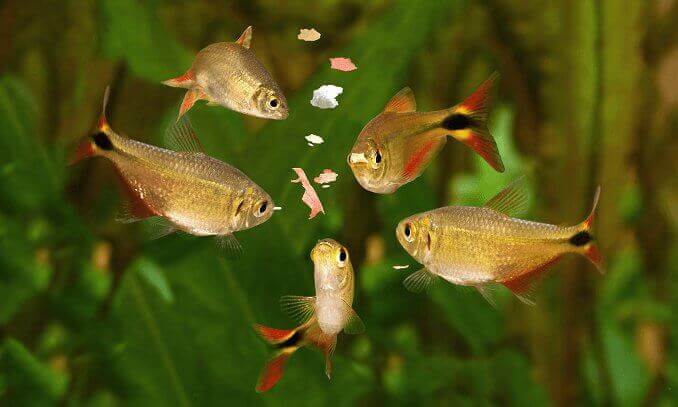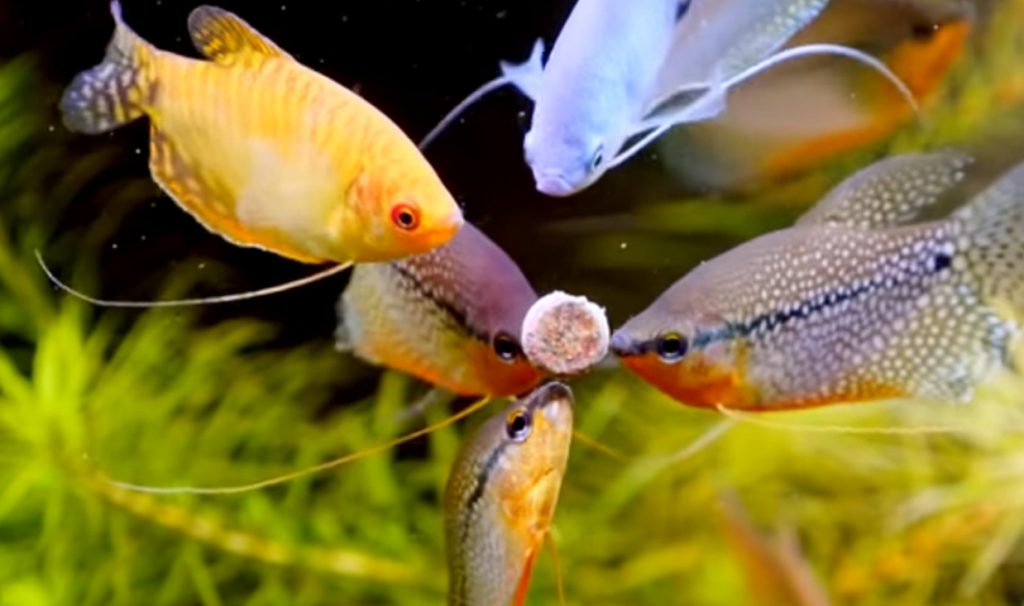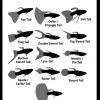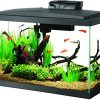
One of the most common mistakes that aquarium tank owners tend to commit is either overfeeding or underfeeding their fish. If the fish are not fed properly, they will often be seen digging around in the aquarium tank in search of food. Aggressive and temperamental fish can also nip their mates and cause chaos inside the tank. In a nutshell, it is important for tank owners to strike the right balance when it comes to feeding their fish. The quality, quantity, frequency of feeding, every aspect has to be taken into consideration by the tank owners if they wish to make sure that their fish remain healthy and well fed.
The aim of this article is to convey all the information and tips related to aquarium fish feeding in a comprehensive manner. From frequency of feeding to the aspects that have to be considered when feeding fish, we will discuss everything in detail. So, let’s get started.

Frequency Of Feeding:
Many aquarium tank owners make the mistake of feeding their fish too often. In the wild, the fish don’t have any feeding schedule. Therefore, they eat everything that comes their way. If they come across a large food resource, they will gobble it all up. And if they don’t find adequate food, they feed on whatever is available to them and carry out searching for more.
Although when placed inside the tank, the fish are aware of the fact that they will be fed and cared for, they still cannot let go of their opportunistic nature. Therefore, it should not surprise the tank owners that the fish will come up to eat whenever food is offered to them irrespective of whether they are hungry or not.
Due to such nature of the fish, many tank owners are fooled and end up adding food to the tank even when it is not needed. This contributes to overfeeding the fish. Overfeeding the fish not only causes health issues for the marine animals but the extra decaying food also affects the hygiene and cleanliness of the tank.
Quantity Of Food:
Other than the frequency of the food, the amount of food that is added to the tank is also an important factor that needs to be taken into consideration. The golden rule regarding the amount of food that should be added to the tank is “add only the amount of food that the fish can eat within a few minutes”.
It is better to add small portions of food to the tank on a frequent basis rather than adding a large amount of food at the same time. Initially, when the tank owners are new to this entire idea, feeding the fish is a challenge for them. However, with the passage of time, they get acquainted with the amount of food that their fish need and can adjust the frequency and the amount of food being added to the tank accordingly.
Understanding Dietary Preferences:
There is no one size fits all approach to feeding aquarium fish. The amount and type of food that one needs to add to the tank varies greatly depending on the type and the species of the fish that is housed by the tank. Understanding the dietary preferences of fish is extremely important in this regard.
Generally, fish can be classified into three types based on their dietary preferences which are:
1. Herbivorous Fish:
Herbivorous fish are the ones which like to feed on plants. These fish require to be fed after every couple of hours as they need to consume a large amount of food to be able to meet their nutritional needs. If not fed properly, these fish will not shy away from eating and nipping plants inside the tank.
2. Omnivorous Fish:
Feeding omnivorous fish is the easiest because these fish eat both plant-based as well as animal-based diets. These fish will fill up on food that is offered to them but will never be too particular about the feeding times. Therefore, tank owners can easily adjust their feeding schedule as per their own convenience and ease.
3. Carnivorous Fish:
These fish are the ones which like to feed on protein-based diets. They can be fed pellet form food that is easily available at pet stores like petfish.com.au. Another food option for these fish is live food items. These items can be released into the tank and the fish will chase it and dine on it.
Understanding the type of fish you have in your tank is the pre-requisite for ensuring that the fish are fed properly. Some tank owners have fishes with the same dietary requirements in their tank whereas there are others who like to mix and match. In case of fish with different dietary requirements, make sure that the feeding schedule and style is organized in a way that it caters to the needs of all the different fish.
When it comes to fish that are omnivorous, the tank owners have to be extra careful. Although they can be fed a wide range of food, it is important for the tank owners to maintain the right balance. Make sure that they are being fed an ample amount of vegetation as well as proteins. Their bodies and structures require both types of nutrients for them to survive happily.
Fish Feeding Columns:
Another important factor that the tank owners have to bear in mind is the column which is preferred by fish for living in. Generally, the aquarium tank can be divided into three main segments. The fish that like to live around the top most part of the tank, the fish that enjoy being in the middle column the most and lastly the fish that live near the bottom of the tank.
Feeding the fish that live around the surface of the water, in the topmost column of the tank, is the easiest. As soon as the food is dropped in the tank, these fish are the first ones to grasp it. Since they are the closest to the top and get food first, therefore, these are the fish that are also at a higher risk of being overfed. Due to their nature, fish will eat all the food that comes their way. As a result, the top column fish rarely let food pass through and reach the other segments of the fish tank.
The middle column fish are the ones that suffer the most. They have to fight with the top column fish to get access to food. When feeding, it is recommended that the tank owners make use of tongs or tweezers to lower food down to the middle section of the tank. This way, the fish in the middle column can be fed and get easy access to the food. It is most likely for the middle column fish to be left out hungry when feeding fish.
The fish that are low lying and like to stay close to the bottom of the tank may not have access to food initially, but since the leftover food once the middle and top column fish are done feeding is moved to the bottom of the tank, they can easily be fed. The leftover food is often hidden at the bottom of the tank. Therefore, the bottom feeder fish can often be seen digging around in the substrate to find food. To feed the bottom column fish properly, lower down the food into the tank and pay special attention to whether they are getting food or not.
Conclusion:
Feeding aquarium fish is simple and easy, but at the same time, it is complex as well. The tank owners need to make sure that all the fish are fed properly and no fish is left hungry. Hungry fish in the tank can be a source of chaos and disturbance. If left hungry for a longer period of time, fish can also nip at each other causing serious injuries in some cases.
Make sure that you have a strict feeding schedule during which food is added to the tank. Other than sticking by a schedule, you also have to focus on the quantity of food that you add to the tank. Make sure that the food added at a time can easily be consumed by the fish in a couple of minutes. Excessive amount of food can cause overfeeding in fish and may even rot and decay disturbing the hygiene of the tank.
The fish’s dietary preferences and the fish feeding columns inside the tank should also be taken into consideration. Make sure that all your fish are fed properly. Another important aspect is to never compromise on the quality of fish food that is being added to the tank. Always trust only reliable and trustworthy fish stores like petfish.com.au for fish food so your fish can be fed properly and their health and well being can be guaranteed!









Feeding fish in the proper way is very important in the aquarium hobby.